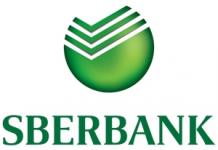The overdraft service for legal entities is actively gaining popularity among corporate clients, individual entrepreneurs, LLCs using the services of banking institutions.
It can be very useful, but you first need to evaluate all the pros and cons of such an offer, as well as evaluate the conditions offered by different banks.
How is an overdraft for legal entities written off? When money is deposited into a legal entity’s account, it is first used to pay off the debt. The interest specified in the overdraft agreement for legal entities is also taken into account.
Using the service is convenient for legal entities, since it is possible to receive funds at any time when they are needed (read more about overdraft for individual entrepreneurs, small businesses and enterprises).
Comparison with a loan and differences
An overdraft, in essence, is a loan, but it has legal entities.
These include the following:
- Overdraft is issued for a shorter period.
- With classic lending, the available amount is calculated depending on the client’s goals and solvency; with overdraft, it depends on the turnover of funds in the account.
- With an overdraft, the amount is repaid fully automatically when replenishing the personal account, while a loan involves partial repayment by depositing funds into a bank account.
- Overspending can be provided at the request of the client, and when lending this is decided individually.
- The interest rate for classic lending to legal entities is fixed and is determined at the conclusion of the agreement, but for an overdraft it depends on the terms and amount. Due to high cash flows, it may decrease.
In each individual case, the question of what is better is decided individually.
- Unsecured. This type of lending (overdraft) for legal entities is most often issued for a period of no more than a year, without collateral.
- Secured. Loan terms in this case may be longer - up to two years, but the conditions may differ.
The possibility of overspending in this case is supported by a pledge in the form of property or guarantee obligations with the participation of third parties.
How is an overdraft provided to a legal entity? Banks can take real estate, goods in circulation, securities, bank guarantees, rights to receivables, and so on as collateral.
Offers from banks
Many large banks offer this service for legal entities (about banks that provide this service -). Let's consider the conditions for several of these proposals:
VTB 24
Sberbank
 Quite often, such a loan product is issued at Sberbank. It offers two programs.
Quite often, such a loan product is issued at Sberbank. It offers two programs.
The first is Express-Orvedraft, the interest on it is 15.5%, and the maximum that can be borrowed with a good history is 2.5 million rubles.
If there is no credit history, the limit is 1.25 million rubles.
Second - Business Overdraft, designed for a rate of 12.73%. The total amount can be up to 17,000,000 rubles, tranche - 30-90 days.
This program primarily assumes an excellent credit history and an active organization.
The packages are designed for up to a year, and the opening commission is 1.2% of the amount. Overdraft for legal entities in this case is provided without collateral. More information about overdraft at Sberbank -.
Promsvyazbank
The amount can reach up to 60,000,000 rubles, but it cannot be more than half of the proceeds to the current account. Interest - from 13%, term - up to five years.
Tinkoff
At Tinkoff Bank the percentage is from 24.9%, but the amount and terms are calculated individually in each specific case. You will learn about overdraft from Tinkoff Bank.
Registration procedure
To be able to use bank funds, The borrowing company must meet a number of requirements:

The client submits the main set of documents when opening a current account. Most often, the service agreement already includes the ability to activate a limit.
After 2-6 months, the bank will offer to do this, or you can submit an application yourself.
In the first case, you can simply refuse to overspend if there is no need for it. In the second, the bank will analyze the financial position of the company, calculate the appropriate limit for a legal entity and the percentage when individually determining the overdraft rate.
Directly when connecting to the service, the following documents may be required:
- Application and questionnaire;
- Constituent documentation with seals of state registration authorities;
- A copy of the license to conduct a certain type of activity, certified by a notary.
- Financial statements marked by tax authorities.
- Audit reporting data.
- Information about the balance of finances, absence or presence of debts.
What do you need to quickly take out an overdraft for legal entities?
Every citizen knows what lending is and what benefits it provides for regular users of the programs. But few people are interested in an alternative solution, namely the overdraft service.
In some cases, this can be a worthy replacement for regular consumer loans and will allow you to get more benefits. Let's talk about arranging an overdraft for a legal entity.
Overdraft concept
The bank offers the use of this service to individuals and legal entities who have an open salary card. It is slightly different from conventional lending and, if all conditions are properly met, you can get benefits.
What is an overdraft service? Thanks to it, the client has the opportunity to make a purchase if there is not enough money on the plastic card.
For example, if a client has collected goods worth 1,000 rubles in a store, but only has 500 in his account, then the bank will allow him to “go into the minus” a little and the remaining 500 rubles will be provided on credit terms.
The term “overdraft” itself is translated as overspending of funds. You can connect services only by signing an agreement with the bank and submitting an application in advance. It differs from conventional lending in that “credit” funds have a short issuance period and the debt must also be repaid quickly.
In most banks, the conditions for providing an overdraft include a grace period of 30 days, during which no interest rate is charged. Interest is charged as for a regular short-term loan. Bank employees approach the issue individually and assign a different limit for each client.
An overdraft for legal entities may depend on income, its stability, the presence of expensive property, and other things.

For entrepreneurs, this cooperation can help establish a business. After all, there are situations when there is not enough money in the current account to purchase a new product or supply equipment, but you need to make a payment urgently.
In this case, the bank will issue the missing amount and then write off the debt along with interest on the loan. This service can only be obtained if you submit an application to the bank in advance and sign an agreement.
Thus, an overdraft helps businesses maintain cash flow and pay bills on time. There are 3 types of overdraft available for legal entities:
- on standard terms;
- advance. This option is available only to verified and reliable clients;
- for collection. Provided in cases of collected revenue of at least 75%.
What are the benefits of an overdraft for legal entities?
The algorithm for how to obtain an overdraft for a legal entity is simple. For each case, a cash limit is calculated.
Thanks to such short-term lending, the borrower has the opportunity not to wait for goods or services to pay off, but to make payments to suppliers and employees on time.
For enterprises, the costs will be minimal, because the loan amounts are small and are constantly repaid from the proceeds to the current account by the end of the banking day. Thus, using an overdraft helps to avoid unpleasant situations and production delays.
How to get a?
A legal entity has an available credit limit that it can use if necessary. To do this, you will not need to prepare documents for obtaining a loan and additionally burden your accounting department.
To sign an agreement, you will need to collect a package of several documents once and submit it to the bank. This will save working time and reduce the burden for financiers and accounting employees of the enterprise.
First of all, you will need to prepare:
- accounting reports on the activities of the enterprise;
- fill out the borrower form and submit an application on behalf of the company;
- cash flow reports;
- documents that will show the status of accounts payable and receivable.
The bank has the right to request from company representatives any other information that can confirm solvency.
He also needs guarantees that the company will not go bankrupt in the near future and may be asked to provide production and sales statistics or other similar documents. If the type of activity of the company requires a license, the bank may ask to provide copies of current licenses.
Limits for each client are calculated separately, because this can be influenced by many factors, ranging from income to financial forecasts for the growth of the company’s income.
For example, several well-known banks can offer the following limits for legal entities:
- Alfa-Bank can sign an agreement if all conditions are met and will issue a limit ranging from 750 thousand to 6 million rubles. Legal clients who are in cash service – from 500 thousand to 10 million rubles;
- UralSib issues a card with an overdraft of up to 500 thousand rubles;
- Mezhtrustbank calculates limits for each client separately;
- Absolut Bank allows its clients to use an overdraft of up to 750 thousand rubles.
Such banks give overdrafts to legal entities quite willingly, especially if the clients’ solvency is high.
Bank conditions for overdraft lending
There is huge competition between banks, each of them is trying to create the most profitable tariff package.
For example, at Absolut Bank the limits are high, so all documents will also have to be accompanied by a certificate from the employer. Usually, having a source of stable income and registration in the region where the plastic card is issued is required.
Depending on the client’s financial situation, the interest rate can be charged in the range from 18% to 30% per annum for using an overdraft.
You will also be required to make a minimum payment of 10% of the principal amount each month. Usually, issuing a card is free, but you will have to pay about 48 thousand rubles a year for maintenance.
More about the loan
- Duration up to 5 years;
- Loan up to 1,000,000 rubles;
- Interest rate from 11.99%.
| Loan from Tinkoff Bank | Apply for a loan |
More about the loan
- According to the passport, without certificates;
- Loan up to 15,000,000 rubles;
- Interest rate from 9.99%.

| Loan from Eastern Bank | Apply for a loan |
More about the loan
- Duration up to 20 years;
- Loan up to 15,000,000 rubles;
- Interest rate from 12%.

| Loan from Raiffeisenbank | Apply for a loan |
More about the loan
- Duration up to 10 years;
- Loan up to 15,000,000 rubles;
- Interest rate from 13%.
| Loan from UBRD Bank | Apply for a loan |
More about the loan
- The solution is instant;
- Loan up to 200,000 rubles only with a passport;
- Interest rate from 11%.
 | Loan from Home Credit Bank. | Apply for a loan |
More about the loan
- Duration up to 4 years;
- Loan up to 850,000 rubles;
- Interest rate from 11.9%.
 | Loan from Sovcombank. |
Among the numerous types of financing, overdraft lending services for legal entities stand out. Banks are willing to set limits for clients with an impeccable credit history, especially if most of the income goes through current accounts opened in any regional division. An overdraft loan for legal entities, what it is, we will consider in this article.
Definition and features of loans in the form of overdrafts
Overdraft for a legal entity– these are borrowed funds that are provided by the bank to cover the current expenses of the enterprise in excess of the balance of funds existing in current accounts. If the client has a time gap between the need to pay his obligations to counterparties and expected receipts, he can count on a loan established on the current account.
Lending under the overdraft program is carried out exclusively on the basis of a formalized credit or loan agreement signed by two parties: a legal entity and a bank.
Types of overdrafts
Given the competitive environment in the banking sector, overdrafts for legal entities may vary. Based on the information used to determine the amount:
- standard. Allocated to existing clients with a good credit history, provided there is no debt to budgetary or other official funds. The loan amount is determined by the average monthly receipts to bank accounts;
- advance. Provided to potential clients as part of their recruitment for services. To calculate the limit, information on receipts to accounts from other financial institutions is used.
By provision:
- blank. The guarantee of fulfillment of obligations is the transfer of turnover or collection to bank accounts in the amount of about 70% of the gross values. In fact, the loan agreement is concluded without collateral. In practice, a guarantee from officials or co-owners of the enterprise is often required;
- with security. The same instruments as in conventional lending can be used as collateral: movable and immovable property. If obligations are secured by funds in deposit accounts, an overdraft is called a technical overdraft.
According to repayment terms:
- trench Fixed terms are established for the repayment of each specific case of using funds in excess of the balance. Within 30–90 days;
- urgent. The agreement specifies the terms for repaying the debt. On average, debt “clearing” should occur once every 30–90 days.
Depending on the bank's credit and marketing policies, there are other types of overdrafts. For example, Sberbank offers individual, express and with a general limit.
For legal entities, the choice of product is directly related to its cost. Risky, unsecured loans are provided at higher interest rates compared to secured ones.

"Sberbank of Russia" - Business overdraft loan: conditions
Conditions for receiving
To know how to obtain an overdraft for a legal entity, you need to familiarize yourself with the general criteria that banks apply when assessing the possibility of lending:
- An impeccable story. The presence of outstanding loans serves as an obstacle to initiating the review procedure.
- No debt, especially overdue, to budget and social funds.
- Profitable activities and availability of income to current accounts. Each bank sets the retrospective independently, depending on the adopted credit policy. On average, 3-6 months of net turnover and at least one annual balance sheet are considered. For technical overdrafts this requirement is removed. For other types of lending, the financial condition of a legal entity is studied more closely.
Banks have an individual approach to lending to legal entities. Therefore, reviewing your overdraft limit can take anywhere from a few days to a few weeks.
Overdraft calculation
Each bank applies its own coefficients and formulas to link the credit limit to clients' current accounts. For example, Sberbank sets an overdraft for legal entities based on an analysis of the turnover of funds over the last 3 months. In others, calculations may take from 2 to 6 months.
In this case, the limit is usually equal to the average value for the entire calculation period, adjusted to the coefficient used by the bank. Depending on the type of overdraft, as well as the financial condition of the legal entity, it may be set from 10 to 75% net average monthly receipts.
How does overdraft work for legal entities?
Most often, the contract is concluded for no more than 1 year. During the validity period, the overdraft is recalculated on a monthly basis. If revenues fall, the amount is reduced. If they grow, the limit for a legal entity is revised upward. Each change in the terms of the loan is accompanied by the signing of additional agreements to the main loan agreement.

The procedure for obtaining credit funds has been simplified to a minimum. To do this, a payment order from the client’s account with no balance is sufficient. Payment is made via overdraft. That is, in excess of the remainder. The purpose of the loan is current activity. It is not permitted to pay for fixed assets or make investments with funds.
Repayment occurs automatically when the next receipt from any counterparty is credited. In this case, interest is charged for the actual time of using the overdraft.
Benefits and inevitable costs
Opening a limit will require the provision of financial and legal documents to the bank. Therefore, the question arises of the justification of obtaining such a loan. Considering that overdrafts are offered directly by financial institutions, many heads of legal entities refuse, because the labor costs and subsequent loan servicing are not worth the time spent: the amounts are not critical, and there are many pitfalls. At the same time, there are many advantages:
- simplified receipt procedure;
- a constant margin of safety to cover cash gaps;
- the presence of an airbag in case of unforeseen costs and force majeure circumstances;
- acceleration of financial and trade turnover.
Credit overdraft for legal entities, what it is and how it works, we have already discussed. But we can’t help but touch on an important component of any financial instrument – expenses. In addition to the interest rate, which is charged for each actual day of use of credit funds in addition to the balance on the current account, there are commissions:
- for reviewing and analyzing documents;
- for setting a limit;
- for early repayment;
- for the unused limit.
The longer the cooperation with the bank and the more stable the financial condition, the more preferences a legal entity may require when servicing. Overdraft often acts as a tool to demonstrate the loyalty of a financial institution to its clients, therefore, during preliminary negotiations, the possibility of canceling additional commissions can be separately discussed.
And pay special attention to the size of penalties for failure to meet repayment deadlines or designated purposes: they can be 2-3 times higher than the established interest rate.
Cooperation between legal entities and banks should lie exclusively within the legal framework. If during negotiations you are promised one thing, but the information in the contract is completely different, you should not rely on verbal assurances from officials at the bank. All overdraft conditions must be recorded on paper.
Bank overdraft is the provision of funds to the borrower by the bank lending to his current account within the established limit, in the event of insufficient or absence of funds in the account, in order to pay for settlement documents. In simple words, a bank overdraft can be said this way: it is a short-term, constantly revolving loan that can be used by enterprises or entrepreneurs who periodically have temporary, short-term needs for additional funds to make payments.
Such a loan is automatically repaid by the bank from the resulting balance of the client’s funds in his account on the morning of each day. So, for example, on the first day the client was given an overdraft, during the next day money was credited to the account, and already on the morning of the third day the loan was repaid using the accumulated funds.
Features of overdraft lending. This type of lending has its own characteristics, which are as follows:
The borrower is obliged to fully repay the existing overdraft debt at least once a calendar month by crediting funds to his current account. In this case, on the repayment day, the borrower’s account is not credited;
Daily automatic loan repayment in the amount of the credit balance of the borrower's current account, which is formed at the end of each business day (after all transactions on the current account have been completed). There are no delays in payment of regular payments during the day;
Interest is calculated on the actual debt on the loan, which, with regular receipt of money, reduces the debt by the end of the day and saves interest costs.
Banks offer their clients the following types of overdraft:
1. standard overdraft (provided by the bank to the borrower within the established limit for the execution of the borrower’s payment orders and payment of expenses associated with their execution, as well as the borrower’s cash documents, despite the insufficiency or absence of funds in the account);
2. overdraft in advance (provided to a client who meets the bank’s requirements in order to return him for settlement and cash services to the bank);
3. overdraft for collection (provided to clients who meet the bank’s requirements and at least 75% of the turnover on the current account loan is comprised of collected cash proceeds (exactly deposited into the current account by the client himself)); 4. technical overdraft (provided to the client, without taking into account his financial condition, against payments made to the borrower’s account (sale or purchase of currency on the stock exchange, until the return of the term deposit or other guaranteed receipts to the client’s account)).
Overdraft conditions.
The requirements of different banks for clients when considering the possibility of providing an overdraft may differ. But the approximate conditions in all banks are almost identical and consist of the following requirements:1. The client must have at least one year of experience in the main activity;
2. Must have used the bank's settlement and cash services for the last 6 months, and have non-zero turnover on the current account (except for advance overdraft);
3. The minimum number of cash receipts to a bank account (or deposits of collected proceeds) must be at least 3 times a week (or 12 receipts per month), except for advance overdraft;
4. Do not have any unpaid claims or orders against your current account.
Submit to the bank a standard package of documents for consideration, as well as certificates from banks where the client has current accounts, about credit turnover for the last few months (at least 6-12 months), and certificates from banks where the client has current accounts, about the presence or absence of loan debts.
To obtain a technical overdraft, legal entities must submit an application for a technical overdraft, with a detailed description of the transaction performed by the client, as a result of which they expect the receipt of funds to the current account (indicating the date of receipt). A copy of the agreement, payment orders, and other documents that reliably indicate the transaction specified in the application.
The overdraft limit for each legal entity is calculated individually using a special calculation method. Each type has its own method for calculating the limit. Methods for calculating overdraft in different banks may have their own distinctive features, but the general principle does not change. The limits of standard overdraft, advance overdraft and collection overdraft are reviewed by banks on a monthly basis, taking into account changes in the client’s performance results.
To ensure compliance with the limit, every accountant can calculate the overdraft. And yet, to increase the amount of the overdraft limit, every accountant must be able to control the flow of money and revenue, avoiding single large payments. Maximum payments, if necessary, divided into several average ones.
Overdraft problems arising during the lending period:
Lack of experience in concentrating funds in a current account by a certain date, with the goal of fully repaying overdraft debt at least once a month. Failure to comply with this feature of the overdraft entails the withdrawal of the credit limit;
Inability to regulate cash flows, both by dates and amounts. This leads to a reduction in the overdraft limit or termination of lending;
Signing the first overdraft agreement, with the condition of transferring the entire cash flow to a given bank, and not a certain part sufficient for lending, can hinder the maneuverability of financial flows.
Most Russians know the concept of a loan, which cannot be said about overdraft. This is a special service that banks provide to debit card holders. In some cases, connecting this option becomes an alternative to lending.
What is overdraft
This service is available to both individuals and legal entities. As a rule, banks open a credit overdraft to salary card holders. This type of loan has many advantages if used wisely. Overdraft – what is it in simple words? This is an opportunity to receive the missing funds to make a payment or pay for a purchase. For example, a client in a supermarket has purchased goods in an amount exceeding the balance on his plastic card, but the bank allows him to “go into the red” and pay for everything.
Translated from English, the term overdraft means overspending of funds. The option is provided only after signing the corresponding agreement with the bank. As a rule, the limit of such a loan is small, as is the repayment period. Banks also provide clients with a grace period when interest is not charged for the use of borrowed funds (up to 30 days). After this, the debt increases at the consumer loan rate. The limit is calculated for clients individually, depending on income and other things.
Overdraft for legal entities
This type of lending is very beneficial for enterprises that have entered into an agreement with a financial institution for the collection of proceeds. Overdraft for legal entities is an excess of the cash balance when making expense transactions. For example, a company urgently needs to transfer money for a new supply of equipment, but the current account is missing some amount. The bank adds funds to make the payment, and then debits them back when the money arrives - along with interest.
The service is provided upon the client’s application by the bank in which the organization has an account. Overdraft lending helps legal entities maintain cash flow and pay bills on time. There are several types of this service:
- standard;
- advance (for reliable clients);
- for collection (with a turnover of collected revenue of at least 75%).
Technical overdraft
If the holder of a salary or classic debit card spends all of his money, going beyond the limit provided, an unauthorized overspending occurs. If the same conditions apply within the agreed loan, then for a technical overdraft you will have to pay interest that is increased several times. For example, for simple overspending, the rate is 18-20%, and for unauthorized overspending, up to 45-60% is charged. In this case, the debt should be repaid as soon as possible to avoid a fine.
An overdraft loan has a strict limit, but unauthorized overdraft can occur in the following cases:
- Payment with a ruble card for purchases in dollars or euros. When converting, the overdrawn amount may exceed the limit.
- Unconfirmed transactions. The client paid for one purchase with a card, after which the financial institution debited the funds for another transaction.
- Technical failure in the system.

Overdraft limit
The amount of funds recalculation may differ for each client, because the limit is set individually. The conditions are stipulated when drawing up the contract, when the holder of a salary or debit card decides to activate this option. The overdraft limit is set after consideration of the application, depending on the client’s income and the turnover of funds on the card. For example, Sberbank of Russia provides individuals with overspending in the amount of initially up to 30 thousand rubles, after which the limit may increase.
Overdraft interest
Typically, financial institutions provide for overpayments that are higher than for consumer programs. What overdraft interest will be set depends on the tariffs of a particular bank. If you are late in paying your debt, additional fees will apply. The approximate rate for this type of lending is 15-25% depending on the financial institution. In addition, overexpenditure has a limited period - no more than 12 months.

What is an overdraft at a bank?
Modern financial organizations offer the population various types of lending to attract customers. A bank overdraft is an opportunity to spend more money than an individual or business has in their account. When funds are received, debt and interest are written off. Each financial institution offers its own conditions. Salary and debit cards with overdraft can be issued at Sberbank, VTB 24 and other large banks in the country.
When connecting to the service, the lender sets a limit on overspending. You can use it an unlimited number of times, since the line is renewed constantly after the debt and accrued interest are written off. If desired, the service can be disabled by submitting a corresponding application to a branch of the financial institution.
What is an overdraft at Sberbank
This financial institution provides the opportunity for private clients and businesses to overspend money on current accounts when connecting to the appropriate service. Thanks to this, if you don’t have enough credit on your card, you can pay for a purchase, and the debt will be written off automatically when credited. The most attractive conditions are available to individuals and legal entities who have a large turnover of funds on cards and accounts.
You can connect such a loan in rubles, dollars, euros. However, there are differences in interest rates: 18% (national currency), 16% (foreign). An overdraft at Sberbank for individuals is opened with an average limit of 30 thousand rubles. Specific figures are calculated by a financial institution's credit expert, analyzing the client's solvency. It is important to pay off the debt no later than two months after it was incurred.

Overdraft VTB 24
All owners of salary and debit cards, which regularly receive income, can sign up for this service. Overdraft VTB 24 is opened for an amount of at least 10-15 thousand rubles. The maximum amount of overspending is set individually, taking into account the client's solvency. If a corresponding agreement was previously concluded, then a loan in case of overspending will be allowed - with a tariff of 20%. Technical or unauthorized - an undesirable phenomenon in which the bank charges 50% and late fees.
Alfa Bank overdraft – conditions
This financial institution provides the opportunity to “go into the red” for debit card holders and corporate clients with a good credit history. Fast processing with a minimum package of papers is what Alfa Bank offers; an overdraft is opened in the amount of up to 6 million rubles (advance) and up to 10 million rubles (personal offers). The loan rate is calculated taking into account many factors and is 13-14%. It is worth noting that for connecting the service the bank charges a commission of at least 10 thousand rubles (1% of the limit).
Video: overdraft card




















